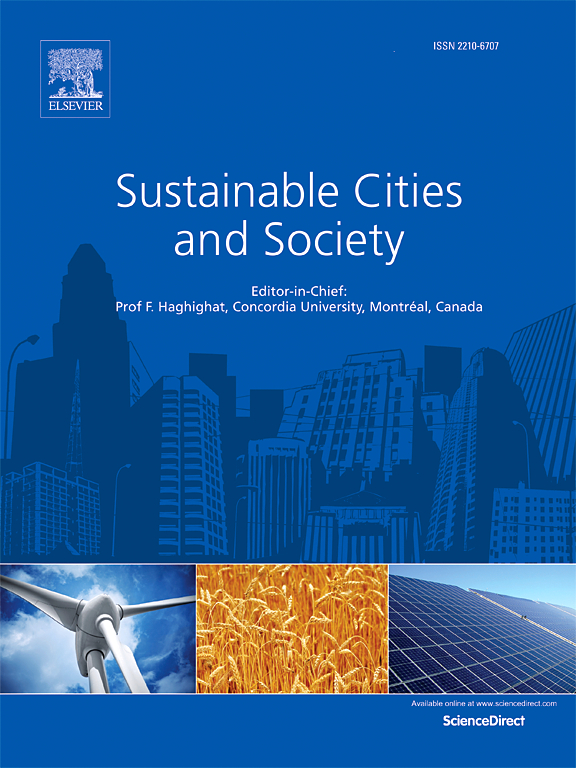Impact of morphological parameters on carbon emission intensity in cold-region university campus clusters: Simulation and optimization
IF 10.5
1区 工程技术
Q1 CONSTRUCTION & BUILDING TECHNOLOGY
引用次数: 0
Abstract
Urban morphology significantly influences the energy efficiency and carbon performance of building clusters. Although previous studies have investigated the effects of urban morphological parameters on either energy use or solar energy generation separately, few studies have explored their combined effects on carbon emission intensity (CEI). Moreover, their focus has often been on residential and office buildings, neglecting university campuses, particularly those in cold climates. This study addresses this gap by analyzing the CEI of university campus clusters in cold regions. A simulation framework was developed to combine energy consumption and solar energy generation and assess the impact of functional and sub-climatic zone differences on CEI. Key urban morphological parameters, such as shape factor, facade roof area ratio, standard deviation of building height, floor area, average building height, and building height-to-depth ratio, were identified using correlation and regression analyses. Machine learning models were applied, with the artificial neural network (ANN) achieving 95.4 % accuracy in predicting emissions. Coupled with optimization algorithms, the ANN model enabled emission reductions of 81.05–137.61 kg/m2/y across six case studies, offering valuable insights for sustainable campus planning in cold climates.
求助全文
约1分钟内获得全文
求助全文
来源期刊

Sustainable Cities and Society
Social Sciences-Geography, Planning and Development
CiteScore
22.00
自引率
13.70%
发文量
810
审稿时长
27 days
期刊介绍:
Sustainable Cities and Society (SCS) is an international journal that focuses on fundamental and applied research to promote environmentally sustainable and socially resilient cities. The journal welcomes cross-cutting, multi-disciplinary research in various areas, including:
1. Smart cities and resilient environments;
2. Alternative/clean energy sources, energy distribution, distributed energy generation, and energy demand reduction/management;
3. Monitoring and improving air quality in built environment and cities (e.g., healthy built environment and air quality management);
4. Energy efficient, low/zero carbon, and green buildings/communities;
5. Climate change mitigation and adaptation in urban environments;
6. Green infrastructure and BMPs;
7. Environmental Footprint accounting and management;
8. Urban agriculture and forestry;
9. ICT, smart grid and intelligent infrastructure;
10. Urban design/planning, regulations, legislation, certification, economics, and policy;
11. Social aspects, impacts and resiliency of cities;
12. Behavior monitoring, analysis and change within urban communities;
13. Health monitoring and improvement;
14. Nexus issues related to sustainable cities and societies;
15. Smart city governance;
16. Decision Support Systems for trade-off and uncertainty analysis for improved management of cities and society;
17. Big data, machine learning, and artificial intelligence applications and case studies;
18. Critical infrastructure protection, including security, privacy, forensics, and reliability issues of cyber-physical systems.
19. Water footprint reduction and urban water distribution, harvesting, treatment, reuse and management;
20. Waste reduction and recycling;
21. Wastewater collection, treatment and recycling;
22. Smart, clean and healthy transportation systems and infrastructure;
 求助内容:
求助内容: 应助结果提醒方式:
应助结果提醒方式:


